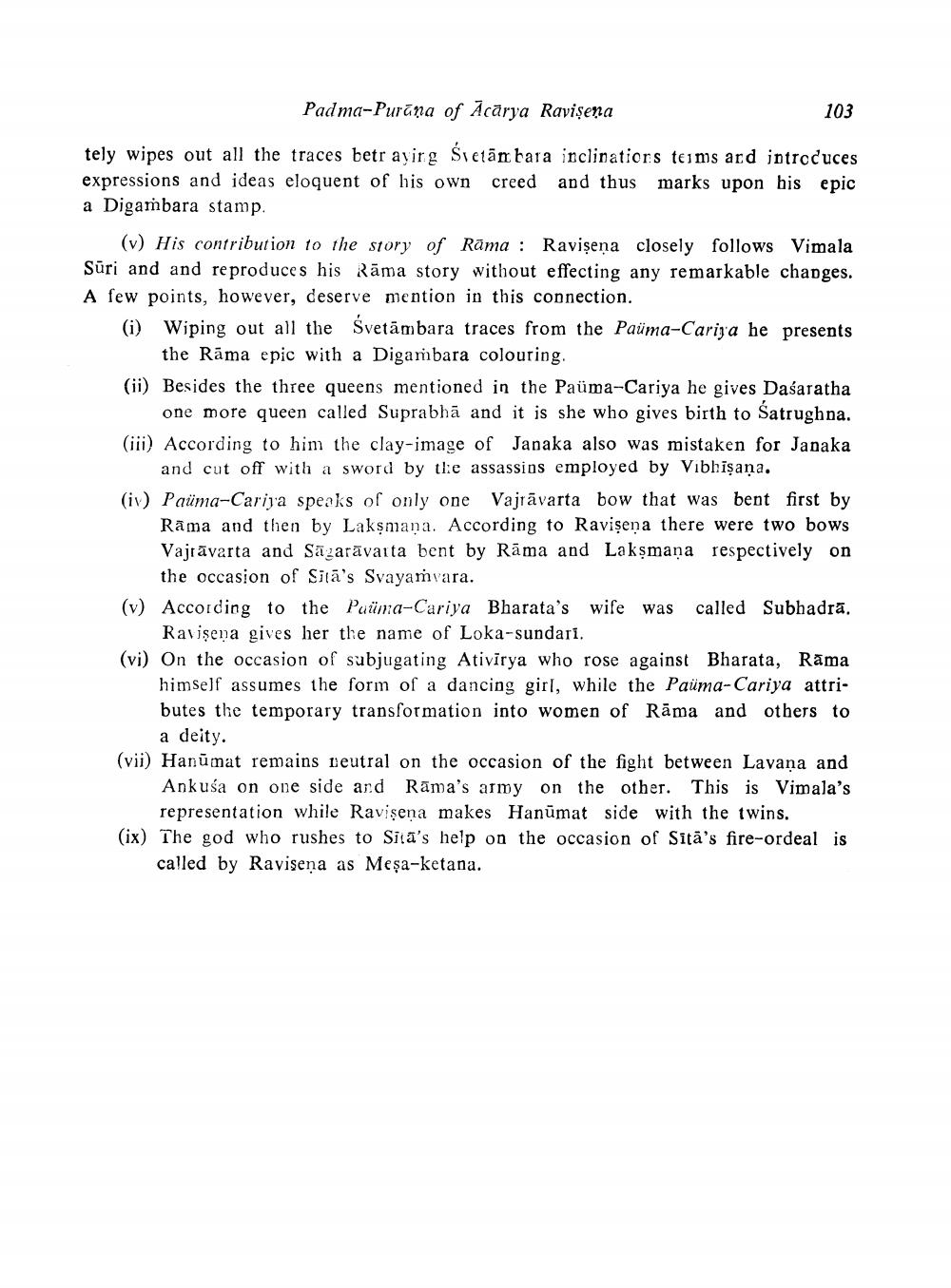________________
Padma-Purana of Acārya Ravişena
103
tely wipes out all the traces betr ayirg Sietān bara inclinatiors teims ard introduces expressions and ideas eloquent of his own creed and thus marks upon his epic a Digambara stamp.
(v) His contribution to the story of Rāma : Ravişeņa closely follows Vimala Sūri and and reproduces his Rāma story without effecting any remarkable changes. A few points, however, deserve mention in this connection. (i) Wiping out all the Svetämbara traces from the Paüma-Cariya he presents
the Rāma epic with a Digambara colouring. (ii) Besides the three queens mentioned in the Paüma-Cariya he gives Dasaratha
one more queen called Suprabhā and it is she who gives birth to Satrughna. (iii) According to him the clay-image of Janaka also was mistaken for Janaka
and cut off with a sword by the assassins employed by Vibhīşaņa. (iv) Paüma-Carija speaks of only one Vajrāvarta bow that was bent first by
Rāma and then by Lakşmana. According to Ravişeņa there were two bows Vajrāvarta and Sasarāvaita bent by Rāma and Laksmana respectively on
the occasion of Sia's Svayamvara. (v) According to the Puüma-Cariya Bharata's wife was called Subhadra.
Ravişena gives her the name of Loka-sundari. (vi) On the occasion of subjugating Ativīrya who rose against Bharata, Rāma
himself assumes the form of a dancing girl, while the Paüma-Cariya attributes the temporary transformation into women of Rāma and others to
a deity. (vii) Hanūmat remains neutral on the occasion of the fight between Lavana and
Ankusa on one side and Rama's army on the other. This is Vimala's
representation while Ravisena makes Hanūmat side with the twins. (ix) The god who rushes to Siia's help on the occasion of Sitā's fire-ordeal is
called by Ravisena as Meşa-ketana.




